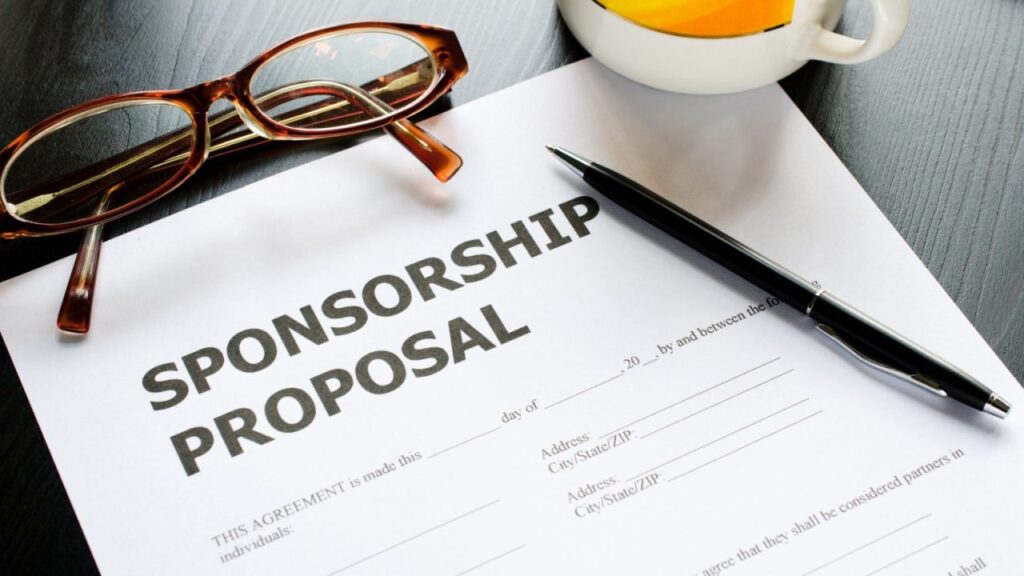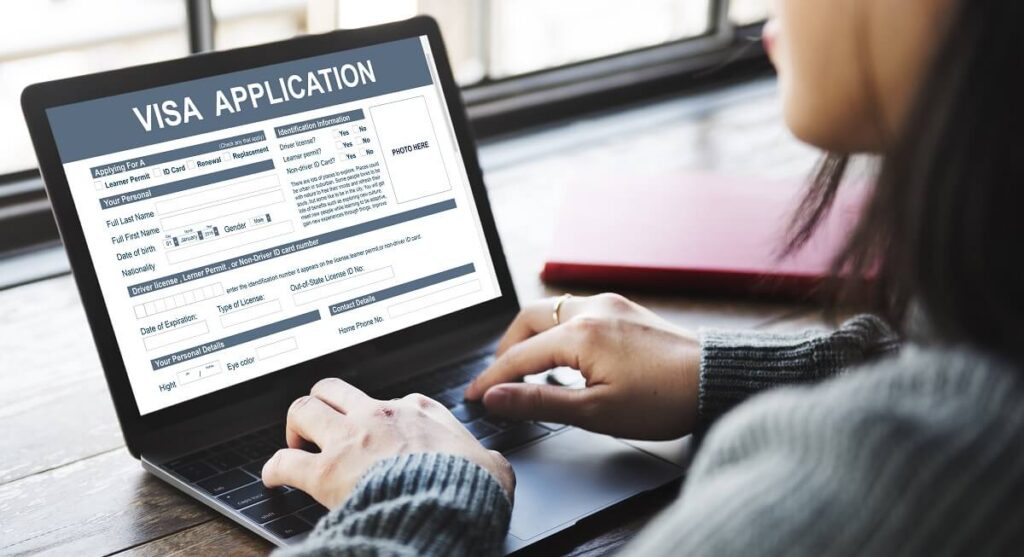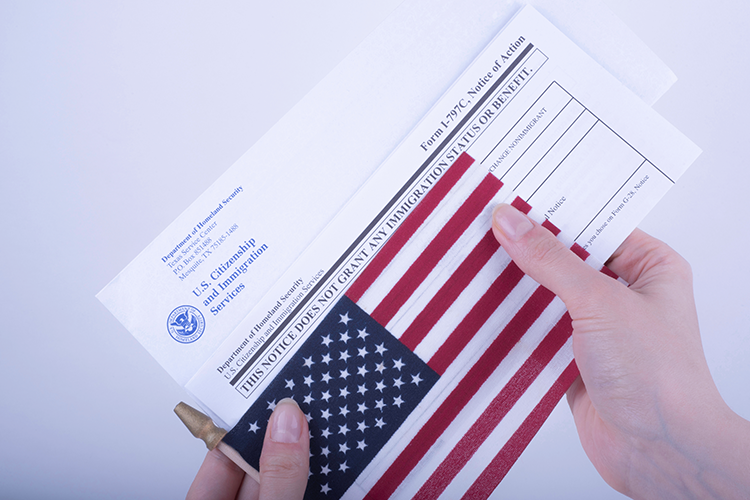The United States attracts individuals from all over the world who come seeking opportunities for education, employment, and family reunification. However, getting a US visa can be a complicated process, especially when it comes to obtaining sponsorship.
Sponsorship is a critical step in the visa application process, and it requires a US-based individual or organization to vouch for the applicant’s intentions and financial support. Visa sponsorship can take the form of financial support, employment opportunities, or proof of relationship, and the sponsor assumes responsibility for the applicant’s actions and well-being while in the United States.
To maintain national security and public safety, the US Department of State and US Citizenship and Immigration Services (USCIS) oversee the visa sponsorship process, enforcing strict regulations.
It’s essential to understand the visa sponsorship process because it can be complex and involves multiple steps, forms, and requirements. Visa applications take several months, or even years, to process, so timely and accurate submissions are critical.
Making mistakes or omissions can result in a denied application, which can delay or even prevent entry into the United States. Additionally, sponsors must ensure that applicants comply with the visa terms to avoid any legal or financial repercussions.
What Are the Benefits of Getting a Visa Sponsored in the USA?

Obtaining visa sponsorship in the USA offers a wide range of benefits for individuals seeking to work, study, or live in the country.
One of the most significant advantages is the opportunity to pursue a career or education in the United States, which can lead to enhanced job prospects, higher earning potential, and a competitive edge in the global job market.
Additionally, visa sponsorship allows individuals to bring their dependents to the USA, enabling families to stay together and build a new life.
Furthermore, sponsored individuals can apply for a green card and eventually become permanent residents, providing a clear pathway to citizenship.
Visa sponsorship also provides access to world-class education, research, and training opportunities, enabling individuals to develop valuable skills and expertise that can be applied globally.
Moreover, living and working in the USA exposes individuals to diverse cultures, ideas, and experiences, fostering personal and professional growth and broadening one’s perspective and understanding of the world.
Overall, getting a visa sponsored in the USA offers a life-changing experience, opening doors to new opportunities and enabling individuals to achieve their goals and dreams.
Types of US Visa Sponsorship Opportunities

It is important that you know the different types of sponsorship opportunities available so you can know which one you are applying for. Some of them include:
1. Employment-Based Visa Sponsorship
Employment-based visa sponsorship provides opportunities for foreign nationals to work in the United States. This type of sponsorship is ideal for individuals with specialized skills, education, or experience.
The most common employment-based visa categories include H-1B specialty occupations, L-1 intracompany transferees, and TN NAFTA professionals.
To be eligible for employment-based visa sponsorship, applicants must meet specific requirements, including a job offer from a US employer, meeting the educational and experience requirements for the specific visa category, and passing a labor certification process to ensure the employer cannot find a qualified US citizen or permanent resident for the job.
Employers must also meet specific requirements, including filing a petition with US Citizenship and Immigration Services (USCIS), demonstrating the ability to pay the prevailing wage for the sponsored employee, and ensuring the sponsored employee will not displace a US citizen or permanent resident worker.
2. Family-Based Visa Sponsorship
Family-based visa sponsorship allows US citizens and permanent residents to sponsor their relatives for a visa. This type of sponsorship is ideal for individuals seeking to reunite with family members in the United States.
The most common family-based visa categories include F-1 Immediate Relative, F-2A Family Preference, F-3 Family Preference, and F-4 Family Preference.
To be eligible for family-based visa sponsorship, applicants must meet specific requirements, including having a qualifying family relationship with a US citizen or permanent resident, meeting the required age and marital status requirements, and passing a medical examination and background checks.
Sponsors must also meet specific requirements, including filing a petition with US Citizenship and Immigration Services (USCIS), demonstrating financial support for the sponsored relative, and ensuring the sponsored relative will not become a public charge.
3. Education-Based Visa Sponsorship
Education-based visa sponsorship provides opportunities for foreign nationals to study in the United States. This type of sponsorship is ideal for individuals seeking to pursue academic or vocational training.
The most common education-based visa categories include F-1 Student Visa, J-1 Exchange Visitor Visa, and M-1 Vocational Student Visa.
To be eligible for education-based visa sponsorship, applicants must meet specific requirements, including being accepted into a US educational institution, demonstrating sufficient financial support for living expenses and tuition, and meeting English language proficiency requirements.
Sponsors, typically the educational institution, must also meet specific requirements, including filing a petition with US Citizenship and Immigration Services (USCIS), ensuring the sponsored student maintains full-time enrollment and makes progress towards their degree, and providing support and guidance for the sponsored student during their stay in the United States.
How to Apply for a US Visa Sponsorship

Step 1: Determine your eligibility
Determining your eligibility is the first step in applying for US visa sponsorship. To be eligible, you must meet specific requirements, including having a valid passport, meeting the required age and education requirements, and having a clear criminal record.
Additionally, you must demonstrate strong ties to your home country and prove that you will not become a public servant in the United States. To increase your chances of meeting eligibility requirements, it is essential to carefully review the specific requirements for your visa category and ensure you meet all the necessary qualifications.
Step 2: Find a US Visa Sponsor
Finding a qualified US visa sponsor is a crucial step in the application process. A sponsor can be a US citizen, permanent resident, or organization and must meet specific requirements, including demonstrating financial support and ensuring the sponsored individual will not become a public charge.
To find a qualified sponsor, you can search for organizations or individuals in your field of expertise or reach out to friends and family members who are US citizens or permanent residents. It is essential to carefully research and select a reputable and qualified sponsor to increase your chances of a successful application.
Step 3: Gather the Required Documents
Gathering the required documents is a critical step in the application process. The specific documents required will vary depending on your visa category, but common documents include a valid passport, birth certificate, proof of financial support, and police certificates.
To ensure a smooth application process, it is essential to carefully review the required documents and information and prepare and submit them accurately and promptly. Additionally, it is recommended to make photocopies of all documents and keep them in a safe place.
Step 4: Submit Your Application
Submitting your application is the final step in the process. The application process will vary depending on your visa category but generally involves submitting your application and supporting documents to the relevant US embassy or consulate.
To avoid common mistakes, it is essential to carefully review the application instructions and ensure all required documents are submitted accurately and promptly. Additionally, it is recommended to submit your application well in advance of your intended travel date to allow for processing time.
How to Find US Visa Sponsorship Opportunities

1. Traditional Job Boards
When searching for US visa sponsorship opportunities, traditional job boards are an excellent place to start. Popular job boards like Indeed, Glassdoor, and LinkedIn offer advanced search filters that allow you to specifically look for job postings that include visa sponsorship.
By utilizing keywords like “visa sponsorship” and “H-1B eligible” along with location filters, you can quickly identify potential job openings that meet your needs. Additionally, niche job boards like NurseJobFinder cater specifically to industries with high sponsorship rates, such as healthcare, making it easier to find relevant opportunities.
2. Company Websites
Another effective way to find US visa sponsorship opportunities is to research company websites directly. Many companies list their visa sponsorship policies and programs on their career pages, making it easy to find information.
By searching for “visa sponsorship” or “immigration” on company websites, you can quickly determine if a company offers sponsorship and what specific programs they have in place. Additionally, checking application guidelines and requirements can help you prepare and increase your chances of success.
3. Networking Strategies
Networking is a crucial aspect of finding US visa sponsorship opportunities. Attend industry conferences and events focused on US immigration or your specific career field to connect with professionals and recruiters who can provide valuable insights and advice.
Join online communities and forums related to US work visas to expand your network and learn about new opportunities. Utilize LinkedIn to connect with professionals in your desired field who are already working in the US, and leverage your existing personal and professional networks to reach out to individuals who have gone through the sponsorship process themselves.
4. Recruitment Agencies
Specialized recruitment agencies can also help connect foreign workers with US employers offering sponsorship.
These agencies, such as IAS USA immigration lawyers and TPG Actual Exchange for teacher exchange programs, often have established relationships with companies and can facilitate the sponsorship process.
When working with recruitment agencies, it’s essential to research their credentials and understand any potential fees involved. By doing so, you can increase your chances of finding a sponsorship opportunity that meets your needs.
Tips for Success

Understanding the Application Process
The application process for US visa sponsorship can be complex and time-consuming, spanning several months or even years. To increase your chances of success, it’s essential to understand the timeline and stay organized.
Start by researching the specific requirements for your visa category and gathering all the necessary documents. Create a checklist to ensure you have everything needed, and make photocopies of important documents.
Regularly check your email and online accounts for updates, and respond promptly to any requests for additional information. Staying organized and on track will help you avoid missed deadlines and delays.
Avoiding common mistakes
Avoiding common mistakes is crucial to ensuring a successful application. One of the most significant errors is incomplete or inaccurate applications, which can lead to denials or delays.
To avoid this, carefully review your application before submitting it and ensure all required documents are included. Another mistake is failing to demonstrate strong ties to your home country, which can raise concerns about your intention to return.
Be sure to provide evidence of your connections, such as a job, family, or property. Additionally, avoid submitting applications with errors or inconsistencies, as this can lead to denial. By being mindful of these common mistakes, you can increase your chances of a successful application.
What to Expect After Applying
After submitting your application, it’s essential to prepare for the next steps. In some cases, you may be scheduled for an interview at a US embassy or consulate. Research the interview process and prepare to discuss your application, background, and plans.
Additionally, be prepared to provide additional documentation or information if requested. In some cases, your application may be placed in administrative processing, which can add several months to the processing time.
Stay patient and responsive to any requests for information, and keep your online accounts up-to-date to receive updates on your application status. By understanding what to expect after applying, you can better prepare for a successful outcome.
Frequently Asked Questions
What is the difference between a non-immigrant and an immigrant visa?
A non-immigrant visa is a temporary visa that allows individuals to enter the United States for a specific purpose, such as work, study, tourism, or business. It is typically valid for a limited period, and the individual must leave the country before the visa expires.
On the other hand, an immigrant visa is for individuals who wish to permanently reside in the United States and potentially become citizens. Immigrant visas require a more extensive application process and often involve sponsorship from a US employer or family member.
How long does the application process typically take?
The processing time for a US visa application varies significantly depending on the type of visa, individual circumstances, and the workload of the US embassy or consulate. Non-immigrant visa applications are generally processed more quickly, often within a few weeks or months.
Immigrant visa applications, however, can take several months to several years to process due to the more extensive background checks and paperwork required. It’s essential to plan ahead, submit applications well in advance, and regularly check the status of your application to ensure timely processing.
Can I apply for a visa while in the US?
In some cases, yes, it is possible to apply for a visa while in the United States. However, it’s crucial to understand the specific requirements and restrictions for your visa category.
For example, if you are in the US on a non-immigrant visa and wish to change your status to an immigrant visa, you may need to file Form I-485, Application to Register Permanent Residence or Adjust Status.
It’s recommended to consult with an experienced immigration attorney to determine the best course of action and ensure you comply with all applicable laws and regulations.
What is the role of a sponsor in the visa application process?
A sponsor plays a critical role in the visa application process, particularly for immigrant visas.
A sponsor is typically a US employer or individual who vouches for the applicant’s intentions and financial support. They must provide documentation and evidence to demonstrate their ability to support the applicant financially and ensure they do not become a public charge.
Sponsors must also sign an affidavit of support, Form I-864, which is a legally binding contract with the US government. In some cases, sponsors may also be required to provide additional documentation, such as tax returns and proof of income.
Can I appeal a denied visa application?
In some cases, yes, it is possible to appeal a denied visa application. If your application is denied, you will receive a letter explaining the reasons for the denial. You can then choose to appeal the decision or reapply for a visa.
To appeal, you must file a motion to reconsider or an appeal with the US Citizenship and Immigration Services (USCIS) or the US Department of State, depending on the type of visa and the reasons for denial.
It’s essential to address the specific reasons for denial and provide additional evidence or documentation to support your appeal. Consulting with an experienced immigration attorney can significantly improve your chances of a successful appeal.
Conclusion
In conclusion, obtaining a US visa through sponsorship requires careful planning, organization, and attention to detail. By understanding the application process, avoiding common mistakes, and preparing for the next steps, you can increase your chances of success.
Additionally, being aware of the frequently asked questions and answers can help you navigate the process with confidence. Remember to stay patient, persistent, and informed throughout the journey to achieving your goals in the United States.
Whether you are seeking to work, study, or reunite with family members, a US visa can open doors to new opportunities and experiences. By following the tips and guidelines outlined in this guide, you can successfully navigate the sponsorship process and achieve your goals.
Don’t let the complexity of the process discourage you; with the right knowledge and support, you can overcome any obstacle and achieve your dreams in the United States.